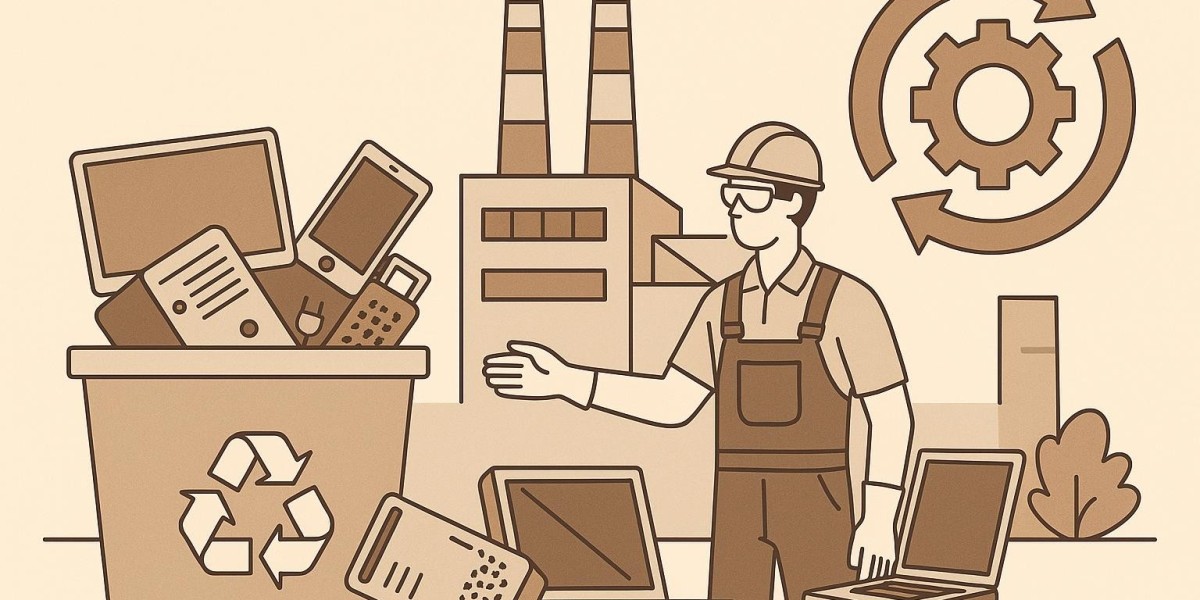In the age of rapid technological evolution, innovation is no longer just about creating new gadgets—it's about responsibly managing what we leave behind. Electronic waste, or e-waste, is growing at an unprecedented rate. But within this complex challenge lies a powerful business opportunity. Setting up an e-waste recycling plant is no longer just a gesture of environmental responsibility. It’s becoming a strategic move toward redefining resource efficiency, value creation, and industrial transformation.
We’ve passed the point where recycling is simply about compliance. Today, an e-waste recycling plant setup represents access to a new kind of supply chain—one driven by recovery, reuse, and regeneration.
A New Resource Economy: Mining Value from Waste
Every discarded smartphone, server, and television is more than just trash—it’s a compressed mine of metals, rare earths, and components with real market value. The global electronics industry relies heavily on finite resources like lithium, cobalt, palladium, and gold, yet we continue to discard devices that contain all of them.
By investing in an e-waste recycling plant setup, entrepreneurs and industries are creating domestic pathways to recover and reprocess these materials. This reduces dependence on volatile global supply chains and contributes to a new kind of economic resilience—one where waste is raw material, not liability.
But the story doesn't end with metals. Circuit boards, plastics, glass components, and even batteries extracted from e-waste can re-enter manufacturing cycles, driving down costs and environmental footprints simultaneously.
Why E-Waste Recycling is Becoming a Strategic Industry
The conversation around e-waste has moved beyond environmental advocacy. It is now a core concern for governments, businesses, and investors alike. Here’s why this shift is happening and what it means for those setting up recycling infrastructure.
1. The Critical Minerals Gap
As the global demand for electronics and electric vehicles surges, so does the demand for rare earth elements and specialty metals. Many of these are available only through geopolitically sensitive supply chains. E-waste recycling creates a localized, secure supply of these critical materials, allowing industries to decouple from international volatility.
2. Tech Brands Under Pressure
Major electronics manufacturers are under growing regulatory and consumer pressure to prove that their products are sustainably sourced and managed after end-of-life. E-waste recyclers who can offer traceable, certified material recovery stand to become key supply chain partners.
3. Circularity as a Growth Model
The circular economy is gaining traction as both a business model and a global mandate. An e-waste recycling plant is a vital node in this economy, enabling the reuse of materials while reducing environmental impact. Companies that integrate recycling into their operations are increasingly rewarded with market trust and government incentives.
What it Really Takes to Build an E-Waste Recycling Plant
Setting up a recycling facility is not just a technical task—it’s an exercise in system design, regulatory navigation, and market positioning.
It starts with identifying the scale and scope of operations. Will the plant handle only non-hazardous devices like computers and phones, or also complex items like batteries and CRTs? This determines the technology stack needed—from shredders and separators to smelters and chemical recovery systems.
Then comes compliance. E-waste recycling in India is tightly regulated under the E-Waste Management Rules, 2022. A proper e-waste recycling plant setup involves securing authorization from the Central Pollution Control Board, preparing a detailed project report, implementing environmentally sound processes, and maintaining real-time data logs for waste movement and processing.
Yet beyond regulation lies opportunity. Plants that go beyond compliance and offer services like data destruction, component refurbishment, and even B2B reverse logistics unlock additional revenue streams and become long-term partners in the electronics lifecycle.
How Visionary Businesses are Leading the Shift
Across India and globally, the most successful recycling ventures are those that understand the deeper shifts underway. They see e-waste not as a nuisance to manage but as a resource to master. They do not stop at collection—they innovate in extraction, separation, and reintegration. They leverage automation, AI sorting, and advanced material recovery techniques to improve yield and scale.
Moreover, they view the e-waste recycling plant setup as the foundation of a larger ecosystem—one that includes collection networks, brand partnerships, refurbished product markets, and education campaigns.
Final Thought: E-Waste Recycling is Not the End. It's a New Beginning.
When businesses think about growth, they often look forward. But sometimes the smartest move is to look at what has been discarded and ask—what can be recovered, reused, reimagined?
An e-waste recycling plant setup is not just a response to a waste problem. It’s the start of a new industrial logic, where sustainability and profitability converge. For entrepreneurs, manufacturers, and policymakers alike, this is the moment to lead with innovation—and turn electronic waste into tomorrow’s competitive edge.

